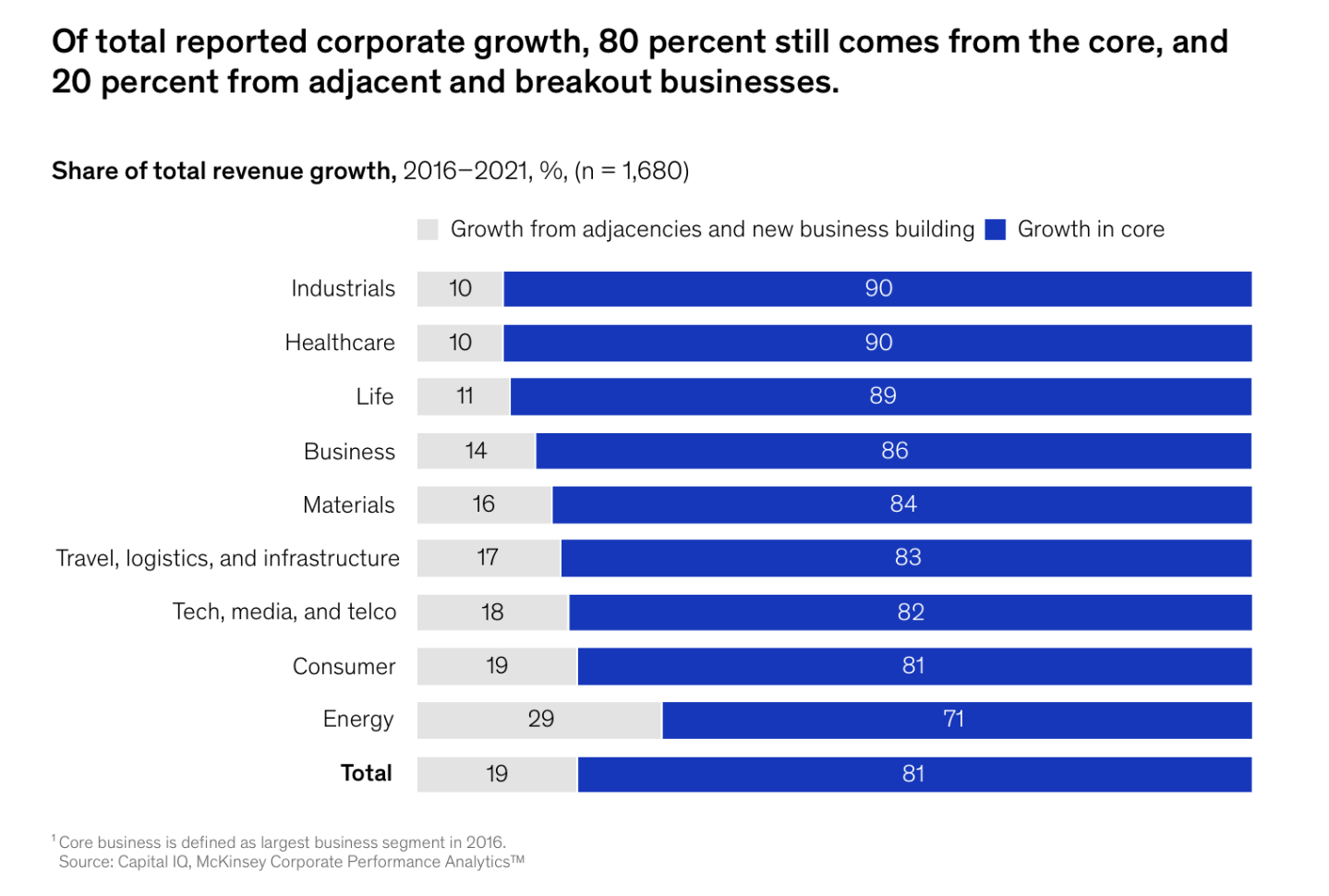Good morning.
Revenue and profit growth are certainly closely monitored by CFOs. However, fewer than one in four companies outpace their industry peers in these areas, according to McKinsey.
The firm analyzed the performance of the 10,000 largest global companies with data from 2016 through 2022. Although many companies had low growth rates during this time, leaders who delivered growth outperformance pursued one or more of the six strategies McKinsey identified. Growth “outerperformers” refers to the more than 1,000 companies with greater-than-median-revenue compound annual growth rate and profitability than their peers.
One strategy for accelerating growth is creating and fostering a culture and mindset of innovation. Amid outperformers, those identified as “innovative growers” achieved four percentage points higher cumulative total shareholder return (TSR), McKinsey found. These companies set clear targets, convey achievable goals to employees—and “foster a culture that is not afraid to take risks,” according to the firm. Innovative growers even talk about innovation on earnings calls at twice the rate of their peers.
The next strategy is a staunch commitment to sustainable and inclusive growth. According to McKinsey: “Between 2017 and 2021—a period when fewer than one in four companies topped 10% annual revenue growth—half of ‘triple outperformers‘ reached or exceeded that benchmark.”
Triple performers are leaders pursuing positive outcomes for their customers, the planet, and their company’s long-term sustainability, Greg Kelly, a coauthor of the report, and a senior partner at McKinsey, tells me.
Another strategy—grow the core business with smart marketing and sales investments fueled by data, analytics, and AI.
The research found that, on average, 80% of total reported growth from companies tracked is driven by core businesses, with the rest coming from adjacent and breakout ones.

Courtesy of Pew Research Center
Courtesy of McKinsey
For example, Walmart has pursued an accelerated innovation model to power its core business, boost operational efficiency, and create next-level customer experiences. The retail giant’s TSR increased by 19.8% during the time period of McKinsey’s analysis.
However, it didn’t necessarily take companies five or more years from the implementation of the strategy to attain notable growth.
“In many cases, we actually saw notable growth even in the first year of investment among growth outperformers, as these companies chose to invest in some of their biggest markets and biggest areas of impact,” Kelly says. And that includes developing higher-margin business lines. Walmart Connect, which sells advertising space to partners on screens across its 4,700 stores, “grew nearly 40% year over year,” Kelly says.
Three additional strategies include: pursuing adjacent and breakout businesses; “shrink to grow” when necessary; and mobilizing people to capture value quickly.
To learn more depth about the six strategies and case studies, you can read the full research here.
Sheryl Estrada
[email protected]
Leaderboard
Felicia DellaFortuna, CFO at BuzzFeed, Inc. (Nasdaq: BZFD), will be leaving the company before the end of November to pursue a new opportunity. Matt Omer, currently EVP of finance and Treasurer, was appointed as the next CFO on Nov. 6. Omer has been at BuzzFeed since 2019, leading finance and treasury. Before joining the company, he was COO and CFO for 123 Home Care.
Neal Sheorey was named EVP and CFO at Albemarle Corporation (NYSE: ALB), effective Nov. 6. Scott Tozier, Albemarle’s current EVP and CFO, will transition from his current role and become a strategic advisor to the CEO. Sheorey joins Albemarle from Dow, a global materials science company, where he served for more than 20 years. Most recently, he was VP of Dow’s Coatings and Performance Monomers business unit. Sheorey also previously served as Dow’s VP of investor relations, and senior director of corporate development.
Big deal
Companies need to continue to work on building trust with customers when it comes to utilizing AI. That’s one of the key findings of Pew Research Center’s comprehensive report, How Americans View Data Privacy.
The survey measured the public’s attitudes toward companies that are utilizing AI in their products. Among those who have heard of AI, 70% say they have little to no trust in companies to make responsible decisions about how they use AI in their products. And 81% say the information will be used in ways people are not comfortable with or that were not originally intended.
However, the perspectives are more mixed regarding the potential of using AI to analyze personal details—more than half (62%) say it could make life easier, according to Pew.

Going deeper
“Timing Matters: Design the Day for Maximum Productivity,” produced by Wharton Executive Education, offers guidance for following your internal clock to improve your daily productivity. Referred to as a “Nano Tool for Leaders,” this guide is something you can learn and start using in less than 15 minutes, “with the potential to significantly impact your success,” according to Wharton.
Overheard
“As leaders, we are sensitive about concerns around AI. Our message to employees is: You are valuable, and we want to use AI to enable you to do more meaningful work—not replace you. AI can spark innovation, help make decisions faster, and unlock opportunities to go after new revenue streams.”
—Paul Hudson, CEO of Sanofi, and Joyce Mullen, president and CEO of Insight Enterprises, wrote in a new Fortune opinion piece based on a discussion among CEO members during the Fortune CEO Initiative Annual Meeting held Oct. 3.
